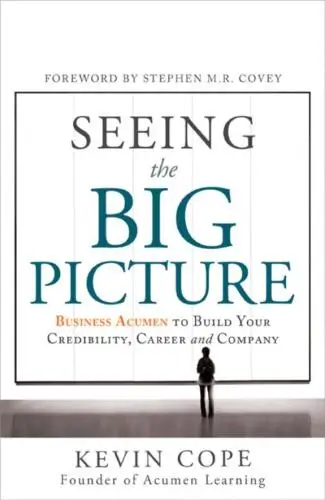Managing Humans
Biting and Humorous Tales of a Software Engineering Manager
What's it about?
Managing Humans delves into the intricate world of software engineering management through a collection of engaging, insightful essays. Michael Lopp utilizes his extensive experience to unravel the complexities of leadership in tech, addressing the challenges of managing smart, creative people. With humor and wisdom, Lopp offers invaluable lessons on motivation, communication, and team dynamics, making it an essential read for both new and seasoned managers aiming to navigate the tech industry's unique challenges.
About the Author
Michael Lopp, known in tech circles as "Rands," is a Silicon Valley-based engineering leader and the insightful author behind "Managing Humans" and "Being Geek." With a sharp, witty writing style, Lopp delves into the complexities of leadership and the nuances of the tech industry, offering readers a unique blend of practical advice and reflective musings on technology, management, and life in the digital age.
10 Key Ideas of Managing Humans
Embrace the Art of Listening to Foster Trust and Respect
Active listening is crucial in management.
It involves fully concentrating on what is being said rather than just passively 'hearing' the message of the speaker.
This tactic builds trust and respect among team members, as they feel valued and understood.
By encouraging open communication and showing genuine interest in their thoughts and concerns, managers can foster a positive work environment where everyone feels comfortable sharing ideas and feedback.
Learn DeeperPractice Active Listening Daily: Make a conscious effort to fully engage in conversations. This means putting away distractions, making eye contact, and nodding to show understanding. Try to summarize what the other person has said to ensure you've understood them correctly.
Ask Open-Ended Questions: Encourage deeper discussions by asking questions that can't be answered with a simple 'yes' or 'no'. For example, instead of asking 'Did you like the project?', ask 'What did you think about the project and how do you feel it could be improved?'
Create a Feedback-Friendly Environment: Regularly remind your team that their opinions are valued. Schedule one-on-one meetings specifically designed for open dialogue, and always respond to feedback with gratitude and an open mind, even if it's not immediately actionable.
Reflect on Your Listening Skills: At the end of each day, take a few minutes to reflect on your conversations. Consider whether you truly listened or if you were just waiting for your turn to speak. Identify areas for improvement and set goals for enhancing your listening skills.
- Example
During a team meeting, a manager notices a team member seems hesitant to share their opinion. The manager pauses the discussion to directly ask the team member for their thoughts, showing genuine interest by leaning in and maintaining eye contact. After the team member speaks, the manager paraphrases their points to confirm understanding before moving on.
- Example
A manager receives an email from a team member expressing concern over a recent policy change. Instead of replying via email, the manager invites the team member for a coffee chat to discuss their concerns in person. During the chat, the manager focuses entirely on listening, asking clarifying questions, and only offers solutions or explanations after fully understanding the team member's perspective.
Implement Regular One-on-One Meetings to Enhance Team Dynamics
Scheduling consistent one-on-one meetings with team members is essential for personal development and addressing individual concerns.
These meetings provide a private space for feedback, discussing career paths, and setting personal goals.
They also help in identifying issues that might not surface in group settings, allowing for a more tailored approach to management and helping in building stronger relationships with each team member.
Learn DeeperSchedule Regular Meetings: Set a recurring time for one-on-one meetings with each team member. This could be weekly, bi-weekly, or monthly, depending on the team size and individual needs. Consistency is key to building trust and ensuring ongoing communication.
Prepare an Agenda: Before each meeting, prepare a brief agenda. This could include topics such as project updates, personal development goals, feedback, and any concerns the team member might have. Encourage team members to add items they'd like to discuss as well.
Create a Safe Space for Open Dialogue: Emphasize the importance of honesty and openness in these meetings. Assure team members that this is a safe space for them to share their thoughts, concerns, and aspirations without judgment.
Follow Up on Action Items: After each meeting, summarize the discussion and any agreed-upon action items. Send this summary to the team member for their records and follow up on these items in subsequent meetings to ensure progress and accountability.
- Example
Example 1: A project manager schedules bi-weekly one-on-one meetings with each member of her team. During these sessions, they review the individual's contributions to recent projects, discuss any challenges faced, and set goals for professional development. The manager takes notes and sends a follow-up email summarizing the discussion and next steps.
- Example
Example 2: A software development team lead holds monthly one-on-one meetings with his team members. In one session, a developer expresses interest in learning a new programming language that could benefit upcoming projects. Together, they outline a plan for the developer to allocate some work hours towards this learning, and they agree to revisit the topic in future meetings to track progress.
Cultivate a Culture of Transparency to Boost Morale and Engagement
Transparency in decision-making processes and company operations encourages a sense of ownership and accountability among employees.
Sharing both successes and failures openly contributes to a culture of trust, reduces rumors and misinformation, and helps employees understand how their work contributes to the company's objectives.
This openness fosters a collaborative environment where employees are more engaged and motivated.
Learn DeeperStart with Why: Whenever you're making a decision or taking an action that affects your team, begin by explaining the reasons behind it. This helps everyone understand the context and see the bigger picture.
Encourage Open Dialogue: Create regular opportunities for team members to ask questions and share their thoughts about company decisions and strategies. This could be in the form of open forums, Q&A sessions during meetings, or anonymous suggestion boxes.
Share Both Good and Bad News: Don't just celebrate successes; also be open about challenges or failures. This honesty helps build trust and teaches valuable lessons about resilience and problem-solving.
Implement Transparent Processes: Use tools and systems that allow team members to track the progress of projects, understand how decisions are made, and see how their work contributes to the overall goals of the organization.
- Example
A tech startup holds a monthly 'All-Hands' meeting where the CEO shares the latest company performance metrics, discusses new strategic directions, and openly addresses employee questions and concerns.
- Example
A marketing team uses a shared online dashboard that tracks the progress of various projects, allowing all team members to see updates in real time, understand who is responsible for what, and how their work fits into the larger campaign objectives.
Adopt a Flexible Leadership Style to Meet Individual and Team Needs
Understanding that each team member has unique motivations, strengths, and weaknesses allows for a more effective management approach.
Adapting leadership style to fit the situation and individual needs can lead to better performance and satisfaction.
Flexibility in leadership approaches, such as knowing when to offer guidance and when to empower individuals to make decisions, can significantly enhance team dynamics and productivity.
Learn DeeperAssess Individual Needs and Preferences: Start by having one-on-one conversations with each team member to understand their unique strengths, weaknesses, and what motivates them. This will help you tailor your leadership approach to each individual.
Adopt a Situational Leadership Style: Be prepared to switch between leadership styles based on the task at hand and the development level of the team member involved. For example, use a more directive style for new or struggling employees and a more delegative style for experienced and high-performing team members.
Encourage Autonomy and Decision Making: Empower your team members by giving them the freedom to make decisions in their areas of expertise. This not only boosts their confidence but also fosters a sense of ownership and accountability.
Provide Regular Feedback: Offer constructive feedback regularly, not just during formal review periods. This helps in addressing issues in real-time and also in recognizing and reinforcing positive behaviors and achievements.
Foster a Culture of Open Communication: Encourage open dialogue within the team. Make it known that you are approachable and willing to listen to concerns, ideas, and suggestions. This can lead to a more collaborative and innovative team environment.
- Example
If a team member is new and lacks confidence, adopting a coaching style where you provide more guidance and support can help them grow. As they become more competent, gradually shift to a supporting role, offering help only when needed.
- Example
For a highly skilled and autonomous team member, use a delegating leadership style. Assign them challenging projects and let them figure out the best approach. This shows trust in their abilities and encourages them to take ownership of their work.
Encourage Continuous Learning and Growth Opportunities
Promoting an environment where learning and professional growth are prioritized can lead to higher job satisfaction and retention rates.
Providing resources for education, opportunities for skill development, and challenging projects helps employees expand their capabilities and stay engaged with their work.
Encouraging a mindset of continuous improvement and innovation keeps the team competitive and adaptable to change.
Learn DeeperSet Personal Learning Goals: Start by identifying areas where you want to grow professionally. This could be learning a new programming language, improving your public speaking skills, or understanding a new market trend. Set specific, measurable goals for yourself and track your progress.
Seek Out Learning Resources: Look for online courses, webinars, workshops, and books related to your field of interest. Many organizations offer professional development budgets, so take advantage of these resources if available. Don't overlook the value of free resources like podcasts and industry blogs.
Join Professional Groups or Forums: Engaging with communities of professionals in your field can provide invaluable insights and opportunities for growth. These groups often share resources, organize meetups, and provide a platform for asking questions and sharing experiences.
Request Challenging Projects: Approach your manager with a willingness to take on projects that push you out of your comfort zone. This shows initiative and a desire to grow, and it can lead to more opportunities for learning and development within your organization.
Reflect and Adjust Regularly: Set aside time regularly to reflect on what you've learned and how you've grown. Consider what's working and what isn't, and adjust your learning plan accordingly. This iterative process ensures continuous improvement and helps keep you motivated.
- Example
A software engineer who wants to improve their coding skills might set a goal to contribute to an open-source project within six months. They could start by selecting a project that interests them, studying its codebase, and then gradually contributing code or documentation.
- Example
A marketing professional interested in digital marketing might decide to learn about search engine optimization (SEO). They could enroll in an online SEO course, apply what they learn to their company's website, and measure the impact of their efforts on website traffic and engagement.
Deeper knowledge. Personal growth. Unlocked.
Unlock this book's key ideas and 15M+ more. Learn with quick, impactful summaries.
Read Full SummarySign up and read for free!
Managing Humans Summary: Common Questions
Experience Personalized Book Summaries, Today!
Discover a new way to gain knowledge, and save time.
Sign up for our 7-day trial now.
No Credit Card Needed

Similar Books

Emotional Intelligence at Work
Dalip Singh
Seeing the Big Picture
Kevin Cope
Leadership Is Concept Heavy
Dr. Enoch Antwi
Great by Choice
Jim Collins
The Leader′s Guide to Coaching in Schools
John Campbell
Preparing School Leaders for the 21st Century
Stephan Gerhard Huber
The E-Myth Manager
Michael E. Gerber
Leadership Is Language
L. David Marquet
Start-up Nation
Dan Senor
The Founder's Dilemmas
Noam WassermanTrending Summaries

Peak
Anders Ericsson
Never Split the Difference
Chris Voss
Smart Brevity
Jim VandeHei
The Psychology of Money
Morgan Housel
The First 90 Days
Michael D. Watkins
Atomic Habits
James Clear
Thinking, Fast and Slow
Daniel Kahneman
The Body Keeps the Score
Bessel van der Kolk M.D.
The Power of Regret
Daniel H. Pink
The Compound Effect
Darren HardyNew Books

A Candle for Kiri
Edna Mae Holm
Principles of Marketing, Global Edition
Gary Armstrong
Serpent Rising: The Kundalini Compendium
Neven Paar
Feeling Is the Secret
Neville Goddard
The 100 Best Business Books of All Time
Jack Covert
My Oxford Year
Julia Whelan
Trading in the Zone
Mark Douglas
Mathematics for Machine Learning
Marc Peter Deisenroth
The Creative Act
Rick Rubin

